This article was co-authored by Claudia Carberry, RD, MS. Claudia Carberry is a Registered Dietitian specializing in kidney transplants and counseling patients for weight loss at the University of Arkansas for Medical Sciences. She is a member of the Arkansas Academy of Nutrition and Dietetics. Claudia received her MS in Nutrition from the University of Tennessee Knoxville in 2010.
There are 12 references cited in this article, which can be found at the bottom of the page.
This article has been viewed 32,339 times.
Folic acid is a type of B vitamin that helps the human body generate new cell tissue.[1] It’s most commonly taken by pregnant women, or women who are trying to become pregnant, in order to increase blood production and improve the baby’s health.[2] You can also consume folate through your diet, by eating foods that have been fortified with folic acid or which contain folate naturally, like leafy greens, broccoli, and citrus.
Steps
Taking Folic Acid Supplements Correctly
-
1Take folic acid through multivitamins and tablets. Folic acid comes in most multivitamins that you can buy over the counter at health-food stores. If your multivitamin does not contain 400 micrograms (mcg) of folic acid, do not ‘double up’ and take more than one multivitamin. Instead, purchase folic acid tablets at drug stores or natural grocery stores. All folic acid tablets should contain 400 mcg.[3]
- If you have a genetic history of neural tube defects (NTDs) and need to take a very high dosage of folic acid, your doctor will need to write a prescription for you. You may be prescribed as much as 5,000 mcg daily.[4]
-
2Take folic acid at a consistent time each day. In order to maximize the usefulness of the folic acid for your body (and, if pregnant, the growing embryo), pick a certain time and consistently take your folic acid then. This could be when you first get up in the morning, while you’re eating breakfast, or during an afternoon break.[5]
- That said, do not take two doses if you skip a day. For example, if you realize on Friday that you never took folic acid on Thursday, do not take two doses on Friday. This has the potential to harm your body.
Advertisement -
3Swallow the folic acid tablet with a glass of water. Folic acid can be taken either with or without food, so it doesn’t necessarily need to be taken with a meal. However, it’s recommended that you take the folic acid or multivitamin tablet with water: this will help you swallow the pill and keep you hydrated.[6]
-
4Store the folic acid tablets in a cool, dry place. Folic acid tablets and multivitamin pills both have a long shelf life. They’ll keep best if stored away from moisture and out of hot places.[7] Keep them in a cabinet or cupboard, or in a pantry that stays at a cool temperature during the day.
- Keep multivitamins or folic acid tablets out of the reach of children.
Using Folic Acid for Pregnancy and Other Conditions
-
1Ask your doctor about taking folic acid. If you’re pregnant—or trying to get pregnant—talk to your doctor about folic acid. It’s important that you do this as early in the pregnancy as possible, preferably even before you’ve actually conceived. Ideally, you should take folic acid for a full month prior to conception and during the first trimester that you’re pregnant.[8]
- If the pregnancy is unplanned and you find out 2 or 3 months in, talk to your doctor and start taking folic acid as soon as possible.
-
2Tell your doctor if you have a genetic history of neural tube defects. Folic acid is crucial to the development of fetuses because it helps prevent neural tube defects (NTDs). NTD's can result in birth defects in the brain or spinal cord, such as anencephaly and spina bifida, respectively. If anyone in your family has an NTD, your doctor may recommend that you take a higher dosage of folic acid. This will help prevent the NTD from being passed to your child.[9]
- Also tell your doctor if you have kidney disease, are an alcoholic, or have any type of anemia. If you have any of these conditions, your doctor will need to adjust your dosage of folic acid.[10]
- If your doctor suggests that you take a higher dosage of folic acid due to a health condition, follow the dosage directions given by your doctor.
-
3Consume at least 400 mcg of folic acid a day. This is the recommended daily dosage for pregnant women. Some organizations, such as the U.S. National Institutes of Health, suggest that pregnant women take 600 mcg of folic acid each day. Although pregnant women can safely take up to 1,000 mcg of folic acid daily, it’s best to work with your doctor to decide on a specific dosage.[11]
- If you take a prenatal vitamin supplement, it likely contains all the folic acid you’ll need. Many prenatal vitamins contain 800–1,000 mcg of folic acid.
-
4Continue to take folic acid while breastfeeding. Don’t stop taking folic acid as soon as you’ve delivered your baby. Taking folic acid while breastfeeding will ensure that the infant continues to receive the health benefits from the vitamin. Check with your doctor to make sure that you should continue taking folic acid post-delivery.[12]
- Generally, breastfeeding women should take 500 mcg of folic acid daily.[13]
-
5Take folic acid to combat or prevent anemia. Anemic individuals struggle with low energy and other health complications caused by a low red blood cell count. Doctors will often suggest that people with anemia take folic acid—often along with other medications—for a few months to increase the speed of their blood-count regeneration.[14]
- As with any other medical condition, seek your doctor’s input before taking folic acid for a medical condition. The recommended or prescribed dosage may vary, and it can be dangerous to self-medicate without consulting a doctor.
- The dosage your doctor suggests will vary based on your age and the severity of your anemia.
Consuming Folate through Your Diet
-
1Supplement your folic acid intake with folate-rich foods. If you’re pregnant and take a multivitamin or folic-acid tablet, you should still work folate-rich foods into your diet.[15]
- If you’re not pregnant (or if you’re male), this obviously isn’t a concern. It’s recommended that men and women over 13 years of age consume 400 mcg of folic acid daily, though. For most people, this can easily be achieved through dietary means.[16]
-
2Eat plenty of dark, leafy greens. Foods including spinach, kale, collard greens, and mustard greens are among the highest in natural folate. 1 cup (237 grams) of spinach alone contains 263 mcg of folate. The same portion of collard greens or mustard greens contains about 170 mcg of folate.[17]
-
3Add green vegetables like asparagus and broccoli to your diet. Although they’re not leafy, other dark green vegetables are typically high in folate as well. These include foods like asparagus, avocado, broccoli, okra, and Brussels sprouts.[18]
- 1 cup (237 grams) of cooked okra contains 206 mcg of folate.
- The same size serving of avocado contains about 100 mcg of folate.
-
4Consume citrus fruits. Citrus is high in natural folate. Fruits like lemon, lime, and grapefruit are good options for dietary folate, although oranges contain the highest amount. A single orange often contains as much as 50 mcg of folate. A grapefruit, although larger, only contains 40 mcg.[19]
-
5Eat folate-enriched items including starchy foods. Breads, cereals, flours, white rice, and pasta are among the food items commonly enriched with added folic acid. Folic acid is typically only added to foods that have refined and processed grains, and not to foods which contain whole grains.
- When you’re out shopping, look closely at the informational nutrition label on a food item. If it says “enriched,” this means that folic acid has been added. The label should also specify how much folic acid is contained in a serving.
- The FDA has required that these foods be fortified with folic acid since 1998 in the United States.[20]
Warnings
- It is possible to take too much folic acid, although it’s not possible to consume too much folate. This means that you won’t suffer any ill effects from eating too much asparagus, Brussels sprouts, or citrus. However, if you take more than 1,000 mcg of folic acid each day, it could cause nerve damage over time.[23]⧼thumbs_response⧽
References
- ↑ https://www.nhs.uk/medicines/folic-acid/
- ↑ http://americanpregnancy.org/pregnancy-health/folic-acid/
- ↑ https://www.babycenter.com/0_folic-acid-why-you-need-it-before-and-during-pregnancy_476.bc
- ↑ http://www.netdoctor.co.uk/medicines/diet-and-nutrition/a6753/folic-acid-dosage-and-how-to-take/
- ↑ http://www.netdoctor.co.uk/medicines/diet-and-nutrition/a6753/folic-acid-dosage-and-how-to-take/
- ↑ https://www.drugs.com/folic_acid.html
- ↑ https://www.drugs.com/folic_acid.html
- ↑ https://www.babycenter.com/0_folic-acid-why-you-need-it-before-and-during-pregnancy_476.bc
- ↑ https://www.babycenter.com/0_folic-acid-why-you-need-it-before-and-during-pregnancy_476.bc
- ↑ https://www.drugs.com/folic_acid.html
- ↑ https://www.babycenter.com/0_folic-acid-why-you-need-it-before-and-during-pregnancy_476.bc
- ↑ https://www.drugs.com/folic_acid.html
- ↑ https://www.nhs.uk/medicines/folic-acid/pregnancy-breastfeeding-and-fertility-while-taking-folic-acid/
- ↑ http://www.netdoctor.co.uk/medicines/diet-and-nutrition/a6753/folic-acid-dosage-and-how-to-take/
- ↑ https://www.womenshealth.gov/a-z-topics/folic-acid
- ↑ https://ods.od.nih.gov/factsheets/Folate-HealthProfessional/
- ↑ https://www.globalhealingcenter.com/natural-health/folic-acid-foods/
- ↑ https://www.globalhealingcenter.com/natural-health/folic-acid-foods/
- ↑ https://www.globalhealingcenter.com/natural-health/folic-acid-foods/
- ↑ https://www.womenshealth.gov/a-z-topics/folic-acid
- ↑ https://www.cdc.gov/ncbddd/folicacid/faqs/faqs-general-info.html
- ↑ https://www.arthritis.org/health-wellness/treatment/treatment-plan/disease-management/methotrexate-managing-side-effects
- ↑ https://www.womenshealth.gov/a-z-topics/folic-acid#references
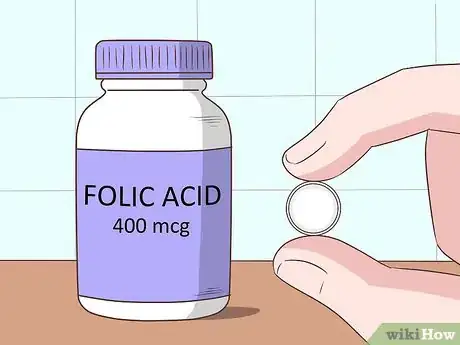







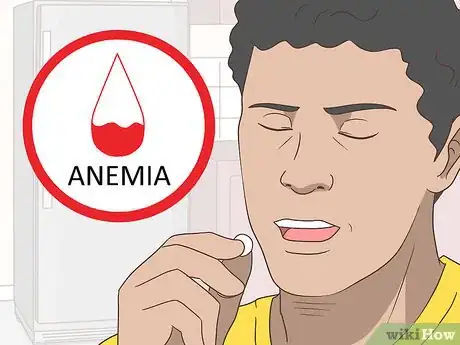

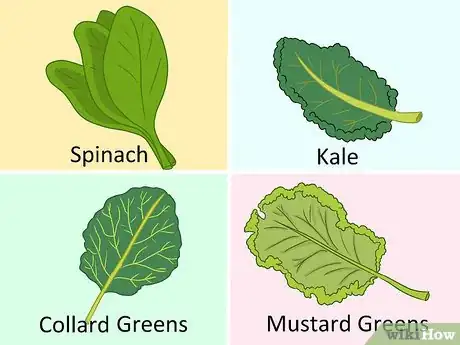
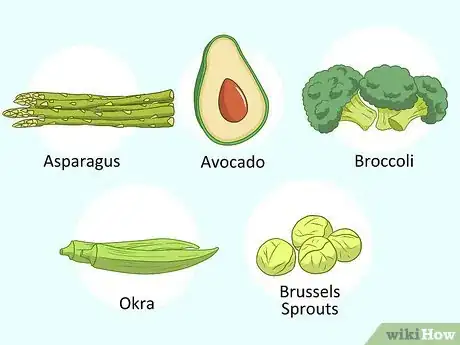
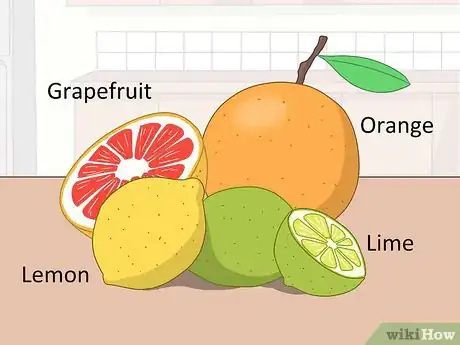









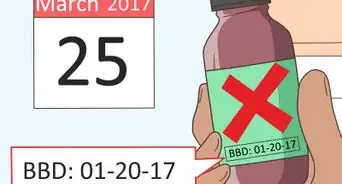

















































Medical Disclaimer
The content of this article is not intended to be a substitute for professional medical advice, examination, diagnosis, or treatment. You should always contact your doctor or other qualified healthcare professional before starting, changing, or stopping any kind of health treatment.
Read More...